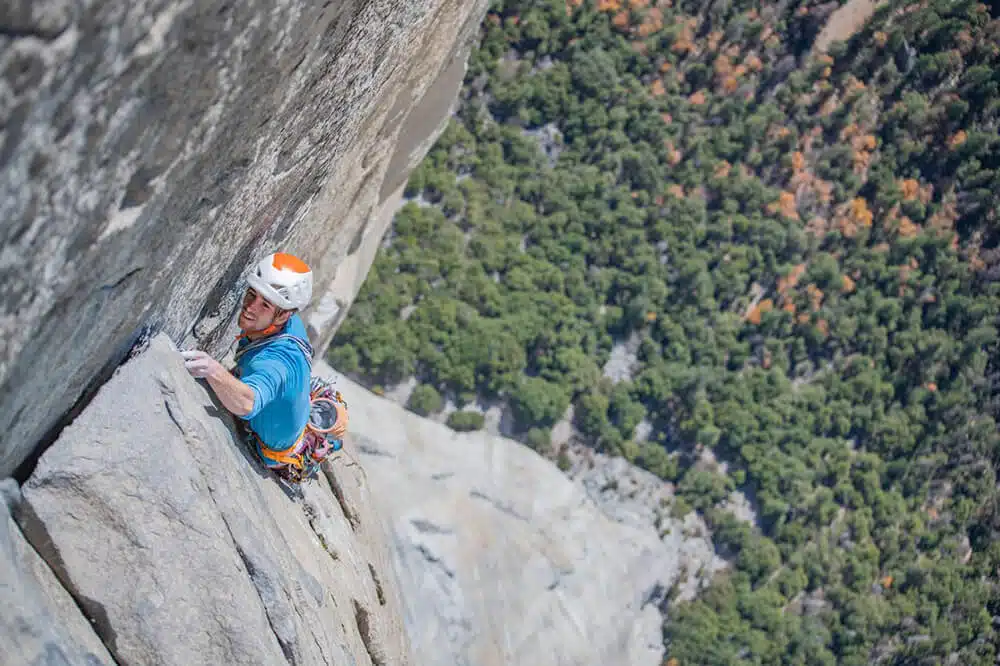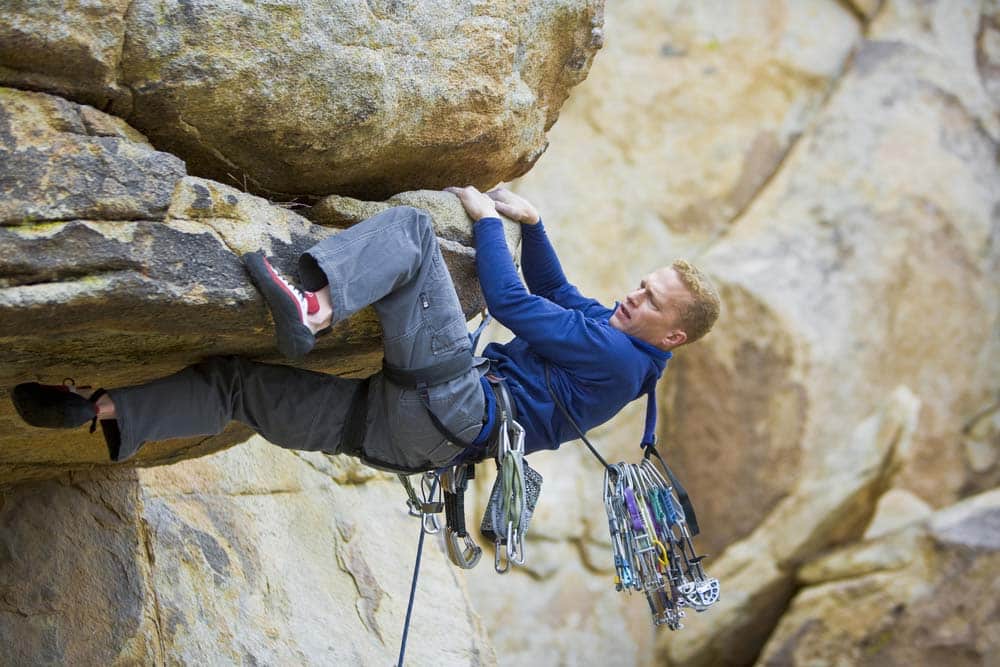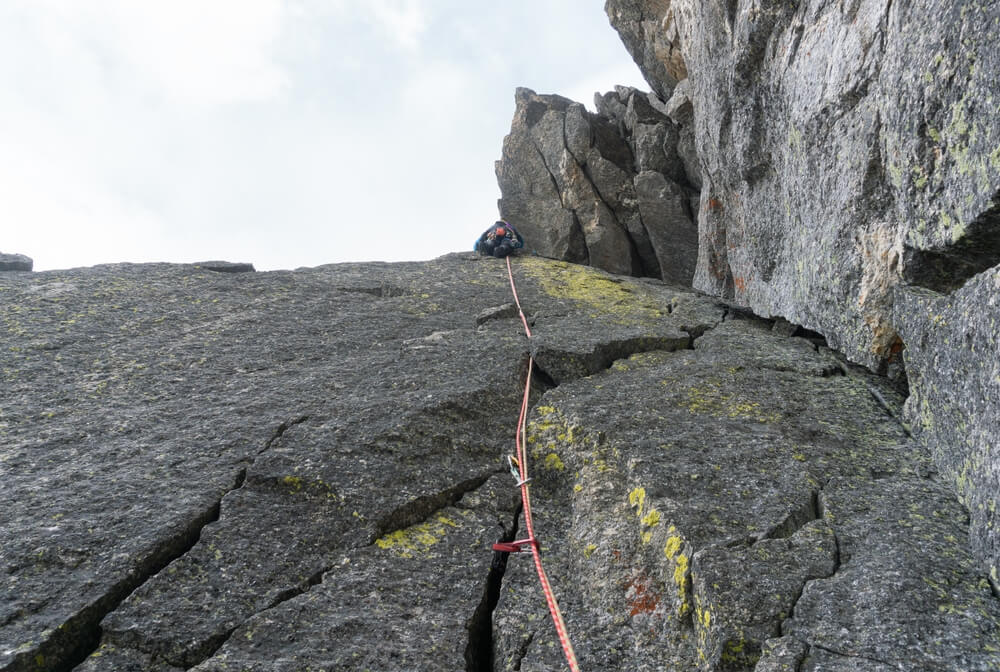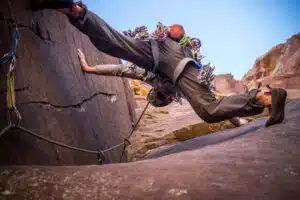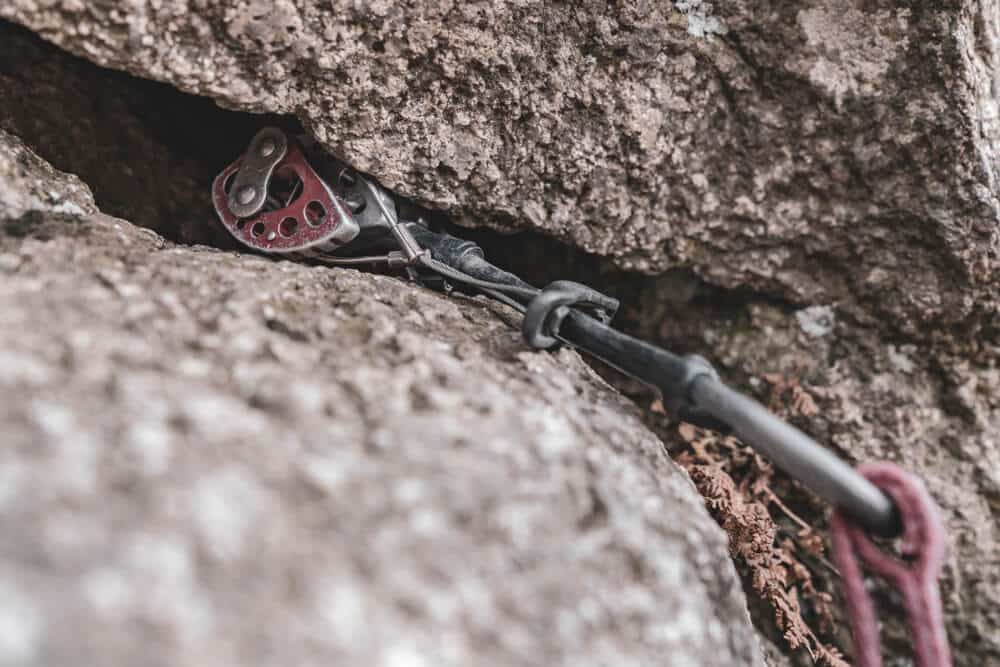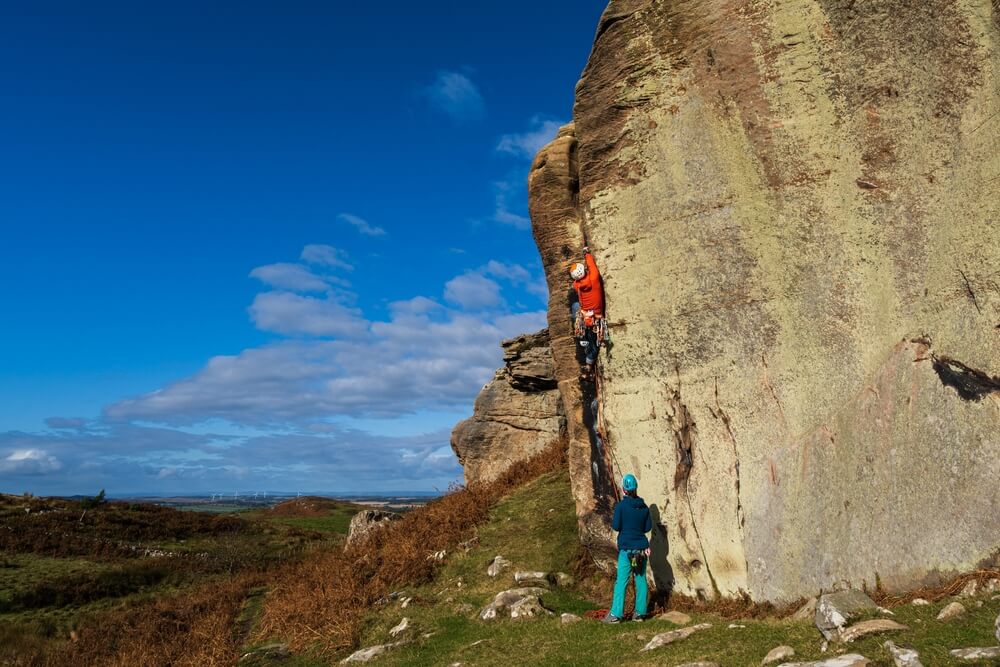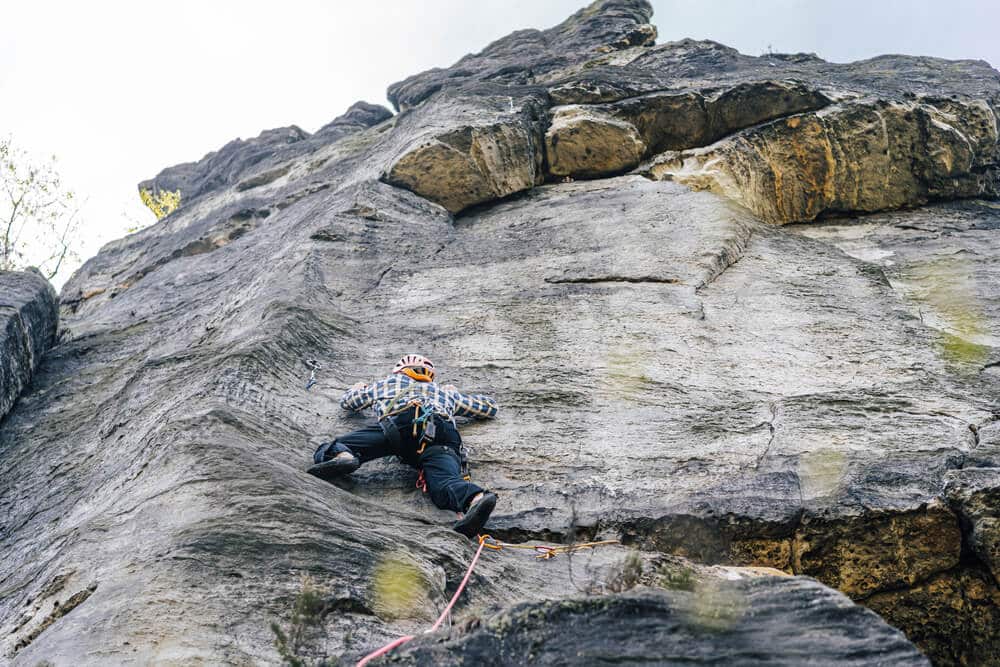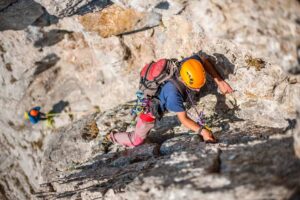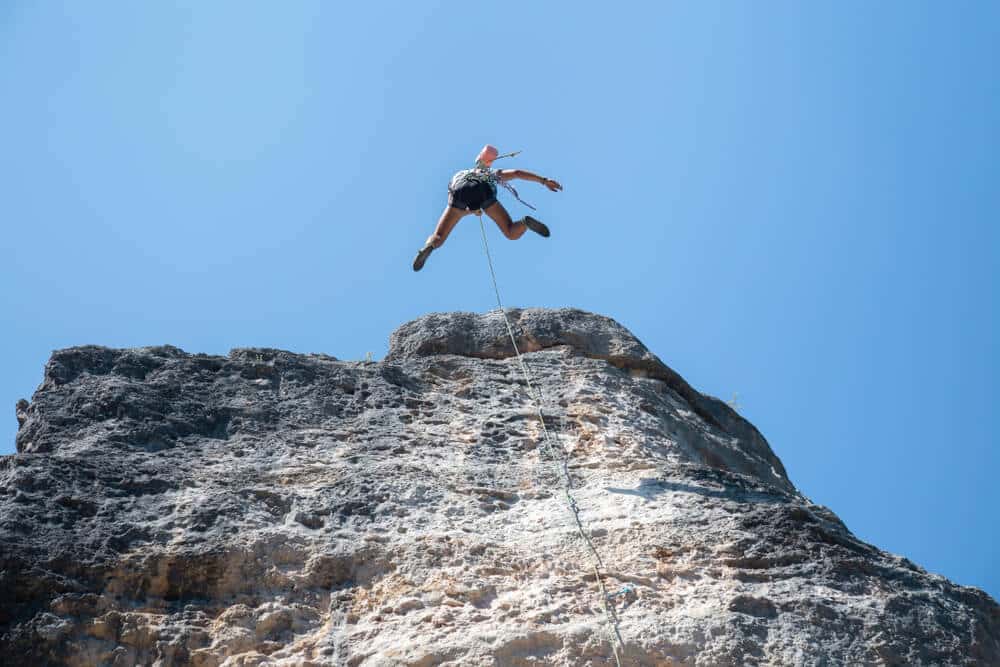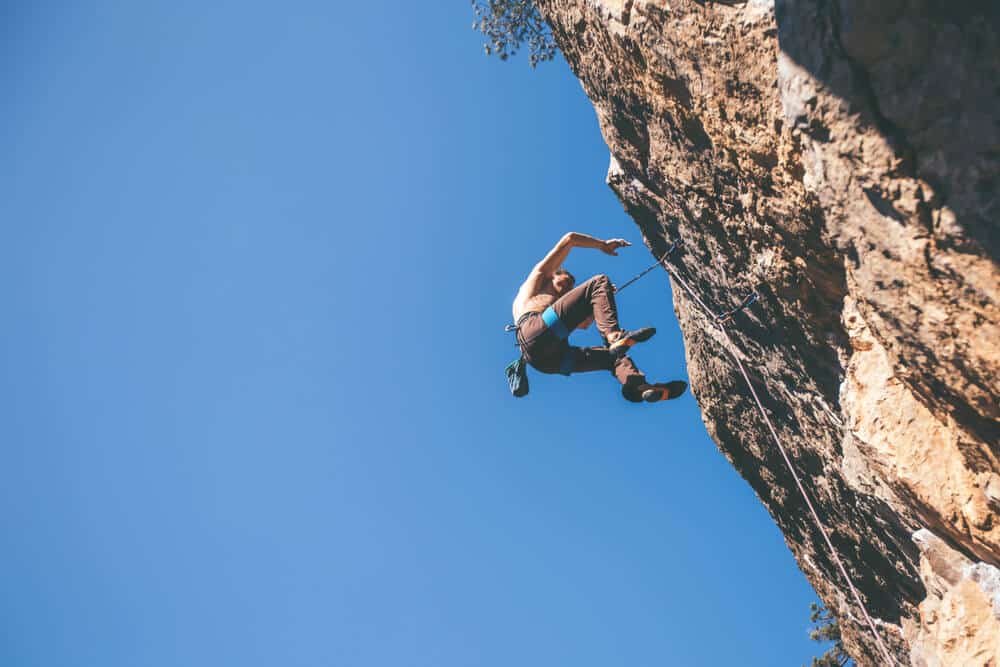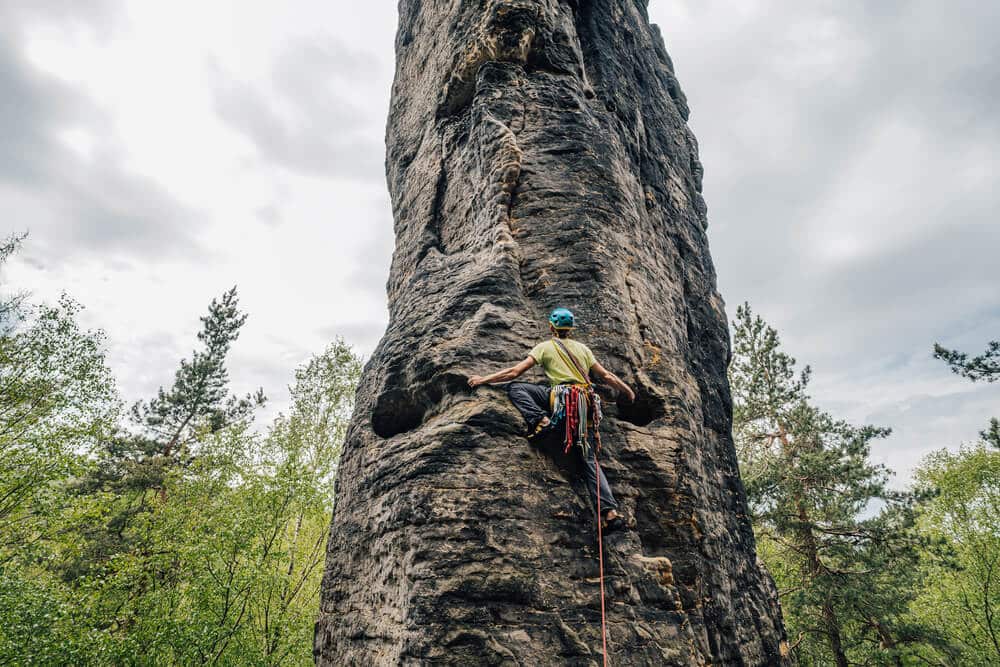In my work as a climbing guide, I frequently work with budding trad leaders who want to improve their skills. We work on a lot of practical items, like building anchors and rescue skills, but we also work on less tangible facets of climbing, like trusting gear placements.
In this article, I want to talk through a progression of steps catered toward helping you learn to trust your gear placements when dealing with the fear of falling.
Although I always curate my sessions with clients based on their unique experiences, a lot of the guidance I provide is inspired by what I’ve learned from more skilled mentors and from my rock climbing-based education, in particular, Arno Ilgner’s Espresso Lessons and The Rock Warriors Way.
Learning to Place Gear vs. Learning to Trust Gear
When you first get into traditional climbing, there should be an intense focus on learning to place good gear. You should spend a lot of time on the ground, imagining hypothetical scenarios, fiddling gear into cracks, and building different types of anchors. With time, you will begin to identify what gear fits where, what pieces are considered good, and how to recognize and improve marginal or bad placements.
This process helps build your confidence as a trad leader because it sharpens the skill of identifying potential gear placements in the wall, pulling the correct-sized piece of your harness on the first try, plugging it into the wall, and finessing the placement until you know it’s good. But it doesn’t help you learn to trust your equipment.
The Fear of Falling
Unfortunately, for some trad leaders, there is a disconnect between placing good gear and trusting it. What I mean is that sometimes I work with climbers who can place good gear and adequately protect a climb. However, they would never trust it enough to fall on it. So when they climb, they never push themselves out of their comfort zones where falling might be an acceptable option. That’s normally because they have a fear of falling.
The fear of falling is perfectly normal in the sport of rock climbing. It’s instinctual not to want to fall off the cliff and to be afraid of the consequences if you do. All climbers experience the fear of falling, even seasoned and steel-fingered veterans. However, what many veteran trad climbers posess compared to new leaders is an innate trust in their equipment.
When you are able to trust your gear, you automatically are able to try a little harder or push yourself a little bit more out of your comfort zone because you know in the back of your mind, the gear at your waist or down by your feet is bomber. On the other hand, a climber experiencing the fear of falling and distrust in their gear will almost always surrender to the fear.
Real Fears vs. Phantom Fears
Sometimes, a climber’s fear response is absolutely warranted. When the rock is crumbly or unreliable, your runout is getting long, or the weather is turning for the worse, it’s normal to succumb to legitimate fear. In these scenarios, climbing can be scary, and you become afraid of real, perhaps life-threatening, fears.
However, sometimes, climbers who are learning to trust their gear succumb to illegitimate fears or phantom fears. Phantom fears are an illusory type of fear. They are illusions in the sense that when you experience phantom fears, there isn’t something objective you should be afraid of. In other words, there isn’t an immediate threat to your survival to be afraid of. Instead, what you are really feeling is a fear of the unknown.
In the case of a climber with a phantom fear of falling, the unknown they are afraid of is oftentimes whether or not the gear they placed will catch them if they fall. This is true even if the gear they placed is objectively bomber.
Using Experiential Learning to Delegitimize Phantom Fears
Phantom fears present themselves as real fears when you lack experiential knowledge to tell you otherwise. In other words, new leaders fail to trust their equipment and succumb to phantom fears because they’ve never put themselves in a situation to learn and delegitimize the fears. When you lack experiential knowledge, your mind takes you to funny places and assumes the worst.
On the other hand, many veteran climbers have a bank of experiential knowledge reinforcing the fact that they place good gear and that it will hold if they fall. Therefore, they are more readily apt to decipher if what they are feeling is a legitimate fear or phantom and to push through if they decide the fear is illusory.
To begin to delegitimize phantom fears when they arise, you have to put yourself in situations where you can gain experiential knowledge. In terms of learning to trust your gear and dealing with the fear of falling, you have to gain that knowledge methodically and safely. The following are steps I use to help my clients learn to trust their placements. The timeline of the progression varies from over the course of a single day to an entire climbing season or many years.
1. Practice with Two Feet on the Ground
Ground school is the best place to learn how to place good gear. Ground school is so effective because it eliminates the physical stressors of climbing and the mental stressors of falling. Therefore, you get to focus entirely on experimenting with gear.
When starting out in ground school, place gear everywhere. Spend time on each placement trying to make it perfect. Observe every piece and try to objectively understand why it’s good. In addition, observe the intricacies of the rock and how the rock plays into the quality of the piece (or detracts from it).
When you place a bomber piece, yank on it. Then, attach yourself to it while wearing your harness. Sit on the piece with all your body weight. Watch what it does, or rather, doesn’t do, to hold your weight. Pay attention to how solid the gear behaves even under load.
When you place a bad or wrong-sized piece, think critically about why it was poor. Was it too big? Small? Then, try to strategically pull another piece off your harness to fix the problem. Later down the line, challenge yourself to quickly assess the size of gear you need based on the placement you see in the wall and try to place the correct piece on the first try.
Over time, and with enough repetitions, you will watch yourself place good piece after good piece, gaining confidence in yourself that you will rely on later.
2. Place Tons of Gear While Mock Leading
After you’ve spent a lot of time in ground school and are confident in your placements, the next step is to place gear while mock leading. Mock leading is when you climb a route on a top rope but are pretending to lead, meaning you are climbing with your rack and placing gear exactly how you would if you were leading the climb.
Mock leading is a great tool because it begins to challenge you in ways similar to leading for real. It reintroduces the physical stressors of placing gear while climbing. For example, the physicality of hanging from one arm and managing the gear on your harness cannot be replicated in ground school.
Meanwhile, mock leading still controls for the mental stressors of falling on your gear. You can place gear more or less “stress-free,” knowing that if you fall, the top rope anchor will keep you safe and not the stopper you placed.
To mock lead, you need a bomber top rope setup and a route that offers a lot of opportunities for placing gear. Besides tying into the top rope, I recommend also tying into a mock lead line so you can practice clipping the pieces you place.
2.1 Overprotect and Then Mock Lead “For Real”
When first starting to mock lead, overprotect the climb. Just get tons of repetitions of identifying a gear placement, taking a piece from your harness, and placing it. On the way up, avoid obsessing over each placement and, instead, critique each one on the way down. Then, improve your placements on subsequent laps.
Later on, challenge yourself to protect the climb the way you would if you were leading. Think about the proper spacing of your pieces to eliminate ground or ledge falls. And think about managing rope drag.
With time, you will get super comfortable on the route. You’ll memorize the climbing beta and begin to perfect your placements. This will help you gain confidence not only in the quality of your gear but also in your ability to place good gear while actively climbing.
3. Take Falls on Gear With a Top Rope Back-Up
The next progression in learning to trust your gear is falling on it during mock leading. This phase of the process continues to challenge you physically by requiring you to place good gear while actively climbing. Plus, it begins to introduce the mental stressors related to the unknown of whether or not your gear will catch you when you fall.
To safely take mock lead falls, you need a bomber top rope set up and a route that takes good gear. The route should also be tall enough and contain a section of climbing where you can safely fall and avoid the ground or ledges. You will also need two other climbing partners. One of your partners will be in charge of the top rope belay, while the other will manage the mock lead belay.
As you mock lead the route on top rope, place gear exactly how you would if you were leading. For example, avoid over-protecting the climb while also managing run-outs and big falls. Clip into every piece using your mock lead line. Pay attention to the locations of your pieces and how to mitigate rope drag. Also, observe how the terrain may impact rope drag.
At a location on the route that is a safe distance from the ground and ledges, place a bomber piece of gear. This will be the piece you fall on. At this point, have the top rope belayer introduce slack into their system so that when you fall, the mock lead belayer will catch you, and the top rope will function only as a backup if the piece fails. Every time you fall, you should be getting caught on by the mock lead belayer to best simulate taking a real lead fall.
3.1 Progressively Take Larger Falls
When beginning to fall on the gear, start small and then progress to bigger falls. For example, take a fall with the piece slightly above your head. Then progress to falling with the piece at chest height and then your waist. If you are really feeling confident, and the terrain allows, you can try taking a fall with the piece at your kneecaps or even at your feet.
Throughout this process, it can be helpful to fall on different sizes and types of pieces so you can learn to trust the array of gear you have on your harness. With time, you will gain experiential knowledge that objectively shows you that well-placed gear is strong enough to catch you and that you are brave enough to fall.
4. Take Practice Falls on Gear without a Top Rope Back-Up
The inevitable final stage of learning to trust your gear is falling on gear without a backup. In this progression, you have to deal with the physicality of placing gear while leading and the mental stressors that come with being on the sharp end. This is the real deal.
Fortunately, by this point, you’ve become super accustomed to the route, and you’ve gained a wealth of experiential knowledge regarding the quality of your placements. You know, objectively speaking, that when you place a piece of gear, it’s strong enough. Your newfound knowledge and confidence give you the ability to trust yourself and confidently climb instead of allowing your mind to fill in the blanks with delegitimate phantom fears.
Like the previous step, start small as you begin taking practice falls. Then progress to bigger falls as you gain confidence. Although you may not have a top rope backup, it’s a good idea to have a second piece placed nearby to function as your backup.
Do More Research and Hire a Professional to Help
Learning to trust your gear, dealing with the fear of falling, and ultimately, taking falls, are skills just like heel hooks and back flags. To improve them and begin to trust your abilities, you have to put yourself in a position to practice them. Otherwise, you’ll struggle to climb with confidence and, unfortunately, succumb to phantom fears that are stunting your ability to grow as a climber.
In general, what I’ve shared here is an abbreviated version of a much more in-depth body of rock climbing philosophy. If you resonated with the article, I recommend purchasing Arno Ilgner’s books and doing more of your own research, or signing up for a Rock Warriors Way Course near you.


